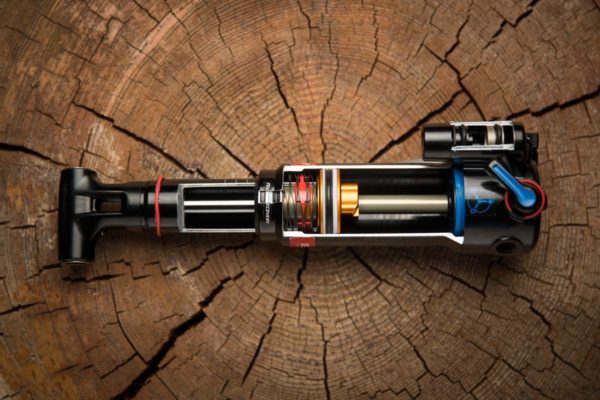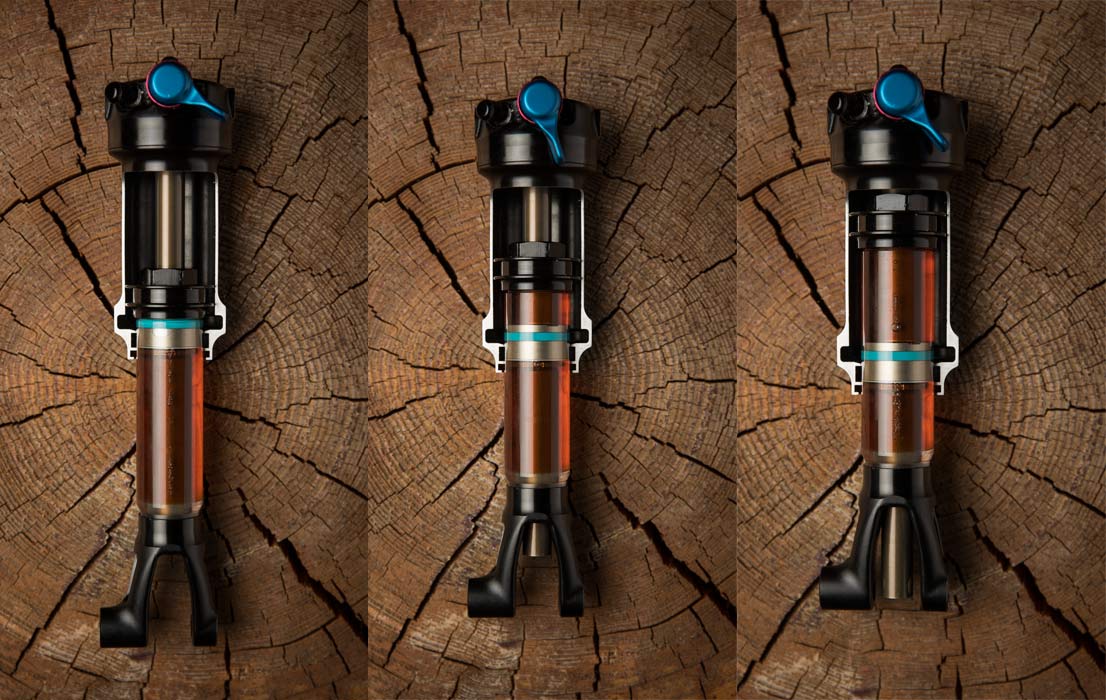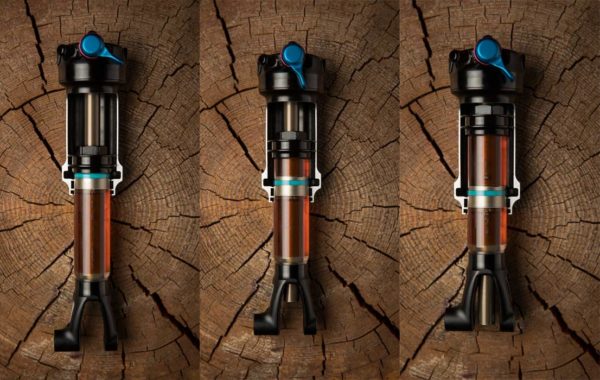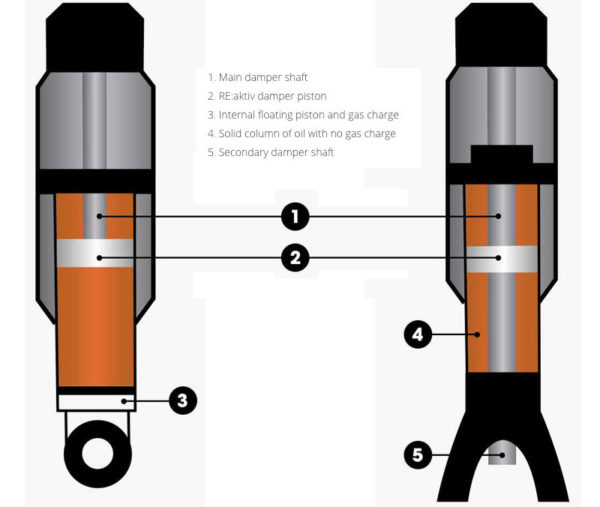Trek’s introduction of a thru shaft shock design for mountain bikes seems like it could solve a real problem with suspension. Have you ever hit a section with so many rapid fire bumps that your rear wheel seems like it just can’t keep track and starts bouncing or skipping over the terrain? The claimed benefit of the Thru Shaft design is that it can react quicker than a traditional IFP-backed shock because it’s not pushing oil against that secondary internal piston. It might help to start with our post about how an IFP works.
We covered much of the new Thru Shaft design tech in the original launch post, but we still had questions. So, to more fully explain how the Thru Shaft works, we got answers from Trek and Fox…
Because the piston shaft runs all the way through the damping chamber, oil volume remains constant. So, Trek’s Travis Ott says “no backfill or recirculation is needed as the volume remains the same. In a traditional shock, when the damper shaft enters the oil it changes the volume forcing the IFP to compress. With a thru shaft there amount of damper shaft in the oil remains constant so no need for volume compensation.
Fox’s Mark Jordan adds “In our thru-shaft design, oil flows through the main piston during compression and rebound. A thru-shaft design is not displacing oil like a standard shock – oil just flows through the piston and back. Because it does not have increasing volume from a shaft during compression, a thru-shaft shock doesn’t require an IFP design to compensate for added volume. However, there are other things to consider like internal pressures and heat expansion.”

OK, so how do you deal with fluid expansion from heat?
“That’s a great question,” says Ott. “On the FOX shock found on the Fuel EX there is less oil than on the larger volume (Rockshox shocks used on the) Remedy and Slash. So thermal compensation on the FOX shock takes place within the damper shaft. On the Rock Shox execution of Thru Shaft there is a small external piggy back unit that deals with oil expansion.”
Indeed, Jordan confirmed there is a tiny spring-backed (as opposed to nitrogen pressure) IFP inside the thru shaft to deal with pressure changes and oil expansion caused by heat.
The fun never ends. Stay tuned for a new post each week that explores one small suspension tech, tuning or product topic. Check out past posts here. Got a question you want answered? Email us. Want your brand or product featured? We can do that, too.


